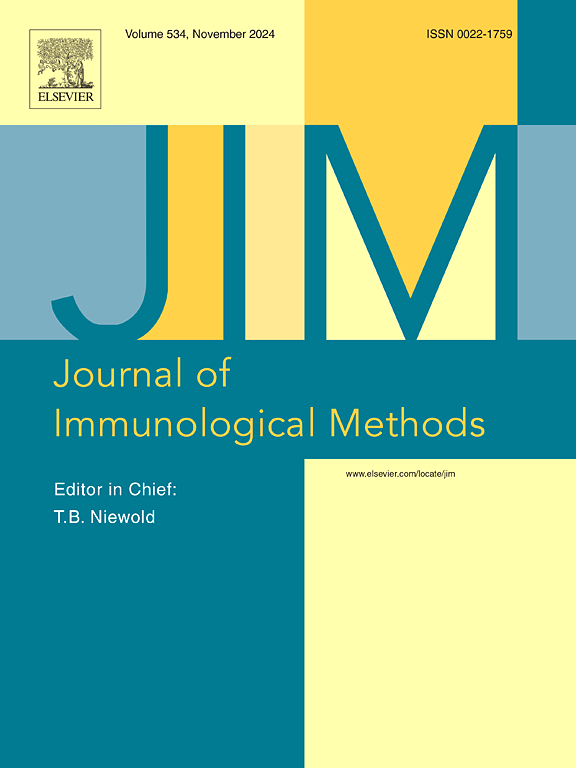Complement function and activation in human serum and plasma collected in different blood collection tubes
IF 1.6
4区 医学
Q4 BIOCHEMICAL RESEARCH METHODS
引用次数: 0
Abstract
Complement analysis necessitates strict control of pre-analytical blood handling, including time, temperature, and additives. Here, we compared complement function and activation status across five different serum preparations and two plasma preparations. Serum was collected from ten healthy volunteers using glass tubes without additives, tubes with a silica clot activator (with or without a gel separator), and tubes containing thrombin (with or without a gel separator). Plasma was collected in the presence of EDTA or the thrombin inhibitor lepirudin. Serum and plasma aliquots were snap-frozen in liquid nitrogen and stored at −80 °C. Complement functional analysis was performed using Wieslab and Hycult Biotech pathway-specific assays. Complement activation was determined by quantifying specific activation markers: C1s/C1-INH, MASP-1/C1-INH, C3bc, C3bBbP, and sC5b-9. All serum samples exhibited increased complement activation compared to EDTA and lepirudin plasma, with serum tubes containing thrombin and gel separators showing the highest levels of complement activation. However, normal complement function was observed in all serum preparations, indicating that the complement activation and consumption that occurred did not affect complement functional analysis. While all tested serum tubes provided accurate functional activity, the type of tube and the presence of additives like thrombin and gel separators significantly influenced the degree of complement activation. We recommend preparing functionally active serum either in glass tubes or in silica clot activator tubes, and avoiding gel separators. For complement activation studies, lepirudin plasma is preferable over serum due to its complement functional capacity, low level of complement activation, and lack of excessive hemostatic activation.

不同采血管采集的人血清和血浆的补体功能和活化。
补体分析需要严格控制分析前血液处理,包括时间、温度和添加剂。在这里,我们比较了五种不同的血清制剂和两种血浆制剂的补体功能和激活状态。从10名健康志愿者身上采集血清,使用不含添加剂的玻璃管、含硅凝块活化剂的管(带或不带凝胶分离器)和含凝血酶的管(带或不带凝胶分离器)。在EDTA或凝血酶抑制剂lepirudin存在的情况下收集血浆。血清和血浆分液在液氮中快速冷冻,并在-80 °C保存。使用Wieslab和Hycult Biotech进行补体功能分析。补体激活通过定量特异性激活标记来确定:C1s/C1-INH、MASP-1/C1-INH、C3bc、C3bBbP和sC5b-9。与EDTA和lepirudin血浆相比,所有血清样本都显示出补体活化增加,含有凝血酶和凝胶分离器的血清管显示出最高水平的补体活化。然而,在所有血清制剂中观察到正常的补体功能,这表明发生的补体激活和消耗并不影响补体功能分析。虽然所有测试的血清管都提供了准确的功能活性,但管的类型和凝血酶和凝胶分离器等添加剂的存在显著影响补体活化的程度。我们建议在玻璃管或硅凝块激活管中制备功能性活性血清,并避免使用凝胶分离器。对于补体激活研究,lepirudin血浆比血清更可取,因为它具有补体功能能力,补体激活水平低,并且没有过度的止血激活。
本文章由计算机程序翻译,如有差异,请以英文原文为准。
求助全文
约1分钟内获得全文
求助全文
来源期刊
CiteScore
4.10
自引率
0.00%
发文量
120
审稿时长
3 months
期刊介绍:
The Journal of Immunological Methods is devoted to covering techniques for: (1) Quantitating and detecting antibodies and/or antigens. (2) Purifying immunoglobulins, lymphokines and other molecules of the immune system. (3) Isolating antigens and other substances important in immunological processes. (4) Labelling antigens and antibodies. (5) Localizing antigens and/or antibodies in tissues and cells. (6) Detecting, and fractionating immunocompetent cells. (7) Assaying for cellular immunity. (8) Documenting cell-cell interactions. (9) Initiating immunity and unresponsiveness. (10) Transplanting tissues. (11) Studying items closely related to immunity such as complement, reticuloendothelial system and others. (12) Molecular techniques for studying immune cells and their receptors. (13) Imaging of the immune system. (14) Methods for production or their fragments in eukaryotic and prokaryotic cells.
In addition the journal will publish articles on novel methods for analysing the organization, structure and expression of genes for immunologically important molecules such as immunoglobulins, T cell receptors and accessory molecules involved in antigen recognition, processing and presentation. Submitted full length manuscripts should describe new methods of broad applicability to immunology and not simply the application of an established method to a particular substance - although papers describing such applications may be considered for publication as a short Technical Note. Review articles will also be published by the Journal of Immunological Methods. In general these manuscripts are by solicitation however anyone interested in submitting a review can contact the Reviews Editor and provide an outline of the proposed review.

 求助内容:
求助内容: 应助结果提醒方式:
应助结果提醒方式:


